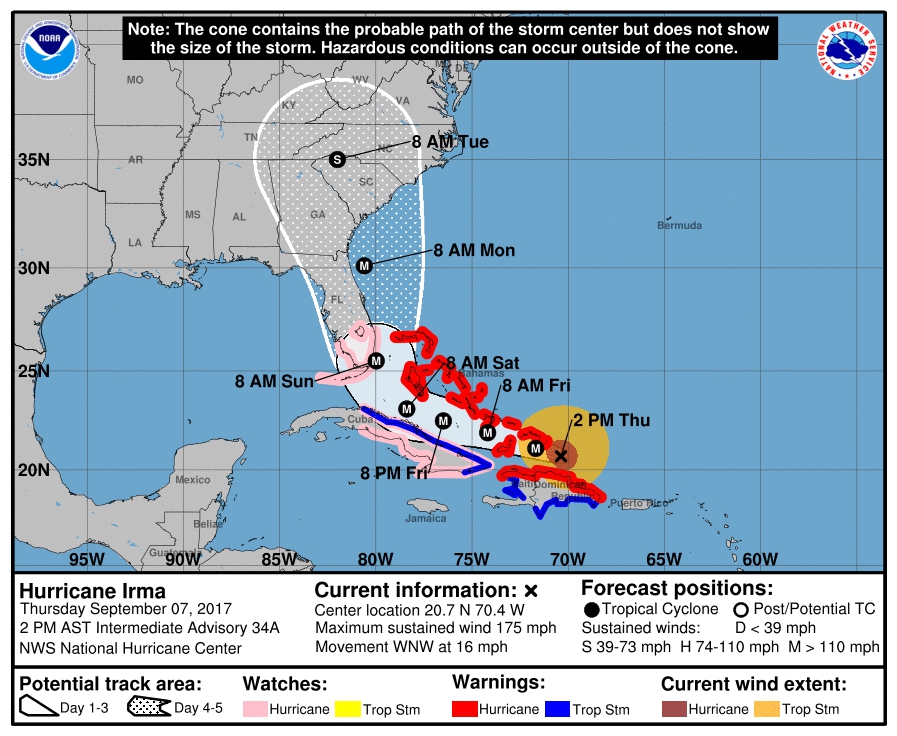Hurricane Irma, a storm of historic proportion, is churning its way through the Caribbean and making a beeline for the state of Florida and the eastern seaboard of the United States. The hurricane has already devastated St. Marteen, destroyed 90% of the structures on Barbuda, and is brushing Puerto Rico and Cuba. Though forecasters are still looking at the data to get a more precise fix on Irma’s path, the category 5 hurricane appears to be barreling toward a direct hit upon Florida, with both coasts likely to be affected. The most recent projections have the Florida Keys and the city of Miami taking a direct hit.
A mandatory evacuation order was issued in Miami-Dade County that affects 650,000 residents. That’s a population equivalent to Baltimore, Boston or the nation’s capital. One of the concerns in Miami is the number of high-rise residential towers that have been constructed, and construction cranes that sit atop structures under construction. Though these buildings have been erected under stricter building code standards that were put in place after Hurricane Andrew, and have some supposedly hurricane-proof features, they have never been tested under the conditions the city might face under Irma. Developers did not have sufficient time to take down the high-rise cranes so a decision has been made to allow them to remain standing but swinging in the wind.

Some of the nation’s historically Black colleges and universities are in Irma’s path or certainly in proximity of the storm’s projected path. Already two institutions have announced their closing and issued evacuation orders for their students. Bethune-Cookman University in Daytona Beach Florida gave students until Wednesday night to leave the campus. The campus has no storm shelters so the university was making arrangements to find safe off-campus locations for students to ride out the storm.
Further up the road in South Carolina, officials at South Carolina State University in Orangeburg issued an evacuation order on Thursday. The residence halls on the campus will close at noon on Friday. Saturday’s football game against Charleston Southern, a home game for State, has also been cancelled and will be rescheduled for later during the season.
The destructive force of Irma is turning it into a once in a lifetime storm, packing 160-180 mph winds and enough moisture to put its victims under 4 to 5 feet of water. For Florida’s low lying coastal areas that could mean property damage in the billions. Meanwhile, FEMA, the federal government’s disaster assistance agency, is running out of cash after assisting areas impacted by Hurricane Harvey just one week ago. While a temporary $8 billion aid package for Harvey aid has been pushed through Congress, that amount does not come close to what the city of Houston and other areas in Texas and Louisiana need after that deadly storm. Now, comes Irma, a storm of even greater strength than Harvey, and FEMA will again be called to help victims of this latest storm.

today in black history
April 26, 2024
South Africa held its first all-race election in 1996, with almost 23 million voters casting ballots over four days.
HBCUs in Irma’s Path
POSTED: September 07, 2017, 4:00 pm





















